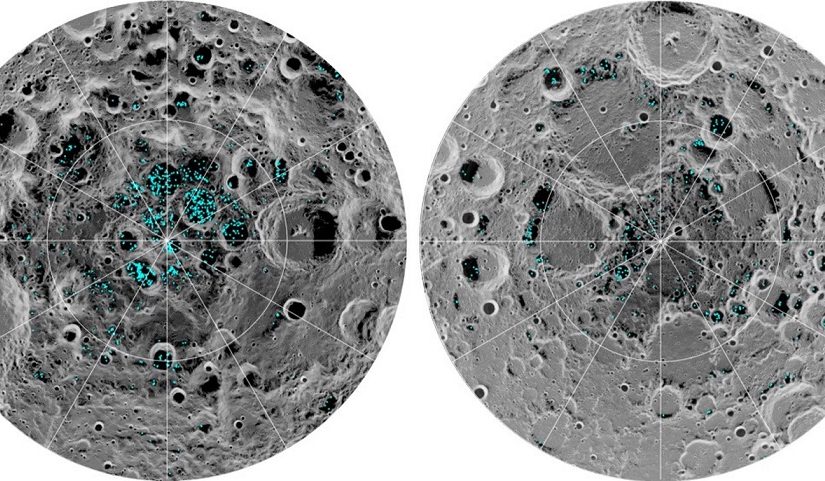U.S. in talks to set up $5 billion fund for critical mineral deals
Water ice confirmed on moon’s surface for first time – NASA says

Surface ice distributions are seen on the moon's south (left) and north poles (right), as seen by NASA's Moon Mineralogy Mapper instrument. The ice locations are seen in blue. NASA
For the first time ever, NASA scientists have confirmed the presence of water ice on the moon, near both its north and south poles.
The findings, published Monday in the Proceedings of the National Academy of Sciences, said definitive evidence has been found that frozen water exists in several locations on Earth’s satellite.
Using NASA’s Moon Mineralogy Mapper (M3) instrument, the team of scientists confirmed what they’d long believed – water exists in some form on the moon.
“With enough ice sitting at the surface – within the top few millimetres – water would possibly be accessible as a resource for future expeditions to explore and even stay on the moon, and potentially easier to access than the water detected beneath the moon’s surface,” said NASA officials in a statement.
Most of the water ice discovered during the study was found in the shadows of craters near the poles, where temperatures hardly ever reach minus 250 degrees Fahrenheit, the statement also said.
This is because of the moon’s tilt, which doesn’t allow sunlight to reach those areas.
The scientists hope to further study the origins of this water before it gets used by future space travelers.
“The results seem very convincing to me,” Ian Crawford, a planetary scientist at Birkbeck, University of London who was not affiliated with the study, told Scientific American.
The M3 instrument is aboard the Indian spacecraft Chandrayaan-1, which studied the moon in 2008 and 2009, according to NBC News.













Leave a Reply
Be the First to Comment!
You must be logged in to post a comment.
You must be logged in to post a comment.